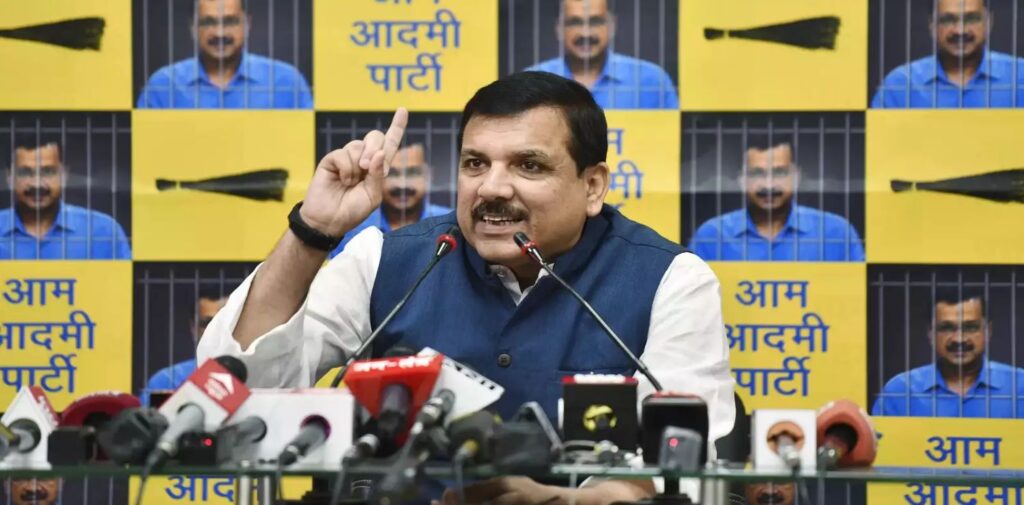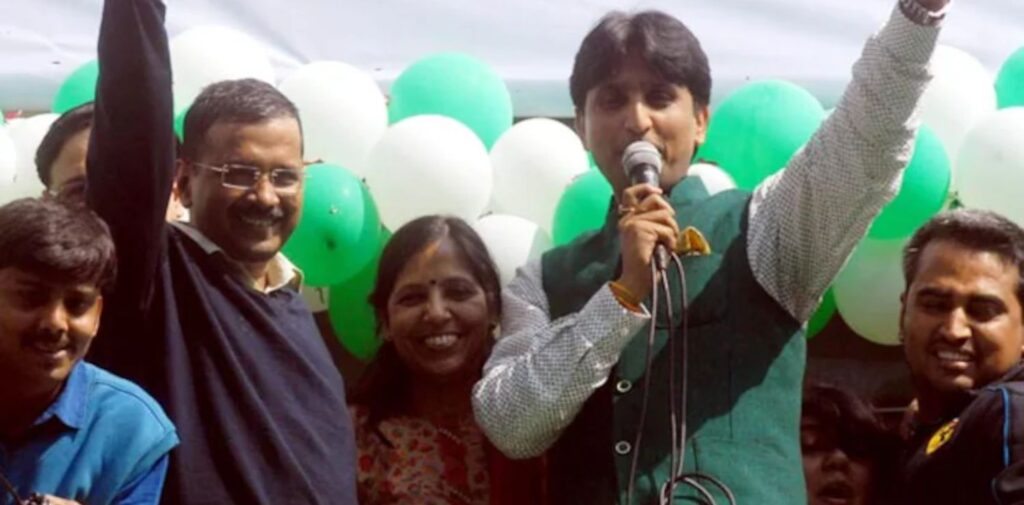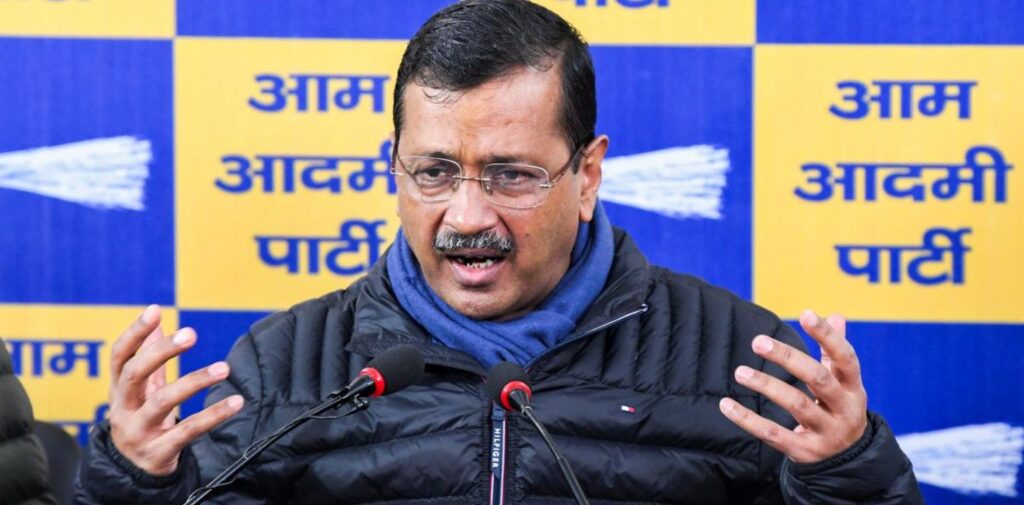In Indian politics, there have been many changes over the years. While many older and bigger parties like the Congress and Bharatiya Janata Party (BJP) have dominated the scene, a new party has emerged in recent years that has captured the imagination of many people. This party is called the Aam Aadmi Party (AAP). The name itself is quite special because “Aam Aadmi” means the common man or ordinary person. The party’s focus is to represent the common people, address their issues, and bring about change in the political system.
So, how did the Aam Aadmi Party come into being? What does it stand for? And how did it grow so fast in Indian politics? Let’s explore this exciting story of a new political experiment in India.
What is the Aam Aadmi Party (AAP)?
The Aam Aadmi Party (AAP) is a political party in India that was formed with the aim of changing how politics works in the country. The party’s main goal is to fight corruption, improve the lives of common people, and ensure that the government works honestly for everyone. AAP believes that ordinary people should have a strong voice in the political system and that the government should always put the needs of the people first.
The party’s symbol is a broom because it represents the idea of sweeping away corruption and cleaning up the government. AAP is based in Delhi but has gained popularity in other parts of India as well, with its leaders promising to change the way politics is done in the country.

The Birth of AAP
The story of the Aam Aadmi Party’s rise begins with a major movement called India Against Corruption (IAC). This movement started in 2011 and was led by Anna Hazare, an activist who wanted to fight corruption in India. Anna Hazare’s protests and hunger strikes got huge attention across the country, and many people joined the movement in support of a new law to stop corruption.
One of the key members of this movement was Arvind Kejriwal, a former civil servant. He was deeply inspired by Anna Hazare’s efforts and played a major role in organizing the protests. Arvind Kejriwal and others involved in the movement felt that the government wasn’t taking corruption seriously enough. They wanted to create a new system where politicians would work for the people, not for their own interests.
After the India Against Corruption movement, Arvind Kejriwal and his supporters realized that merely protesting would not be enough to bring about real change. They needed to create a new political party that could challenge the old ways of politics. And so, in 2012, the Aam Aadmi Party (AAP) was born. The party’s goal was to fight corruption, bring transparency to the government, and give power back to the people.
AAP’s Ideology and Goals
The Aam Aadmi Party’s main idea is simple: politics should be about the people, not the politicians. AAP believes in:
- Fighting Corruption: AAP wants to get rid of corruption in government offices and public life. They believe that politicians and officials should be honest and work for the people, not for personal gain.
- Transparency and Accountability: The party wants the government to be transparent, meaning the people should know how their money is being spent and how decisions are being made. AAP believes that politicians should be held accountable for their actions.
- Basic Needs for the Common Man: AAP wants to ensure that every person, especially the poor and middle class, gets access to basic services like clean water, good healthcare, and quality education. The party believes that the government should focus on solving the everyday problems of the common people.
- Decentralized Governance: AAP believes that power should not only lie in the hands of a few politicians. Instead, they want to bring power closer to the people and ensure that decisions are made at the local level.
AAP’s Big Breakthrough in Delhi
Although the AAP started with big dreams, the first real success came in Delhi, the capital of India. In 2013, Delhi held elections, and AAP, led by Arvind Kejriwal, decided to contest against well-established parties like the Congress and the Bharatiya Janata Party (BJP).
To everyone’s surprise, AAP did extremely well in these elections. In fact, it became the second-largest party in Delhi, winning 28 out of 70 seats in the Delhi Legislative Assembly. Arvind Kejriwal became the Chief Minister of Delhi for the first time in December 2013. This was a huge achievement for a party that had only been formed a year earlier.
Though AAP had a short time in power in 2013, it showed that people were ready for a change in the political system. The party promised to bring down electricity prices, improve water supply, and tackle corruption, and these promises helped it gain a lot of support from the people of Delhi.

AAP’s Victory in 2015: A Political Tsunami
AAP’s real breakthrough came in 2015 when Delhi held another election. This time, the party led by Arvind Kejriwal not only won but won in a landslide. AAP secured an unbelievable 67 out of 70 seats, which meant that it had a massive majority in the Delhi Assembly.
This victory showed that people were very happy with the way AAP had governed in its first short term. Kejriwal’s government focused on providing better public services like free water and cheaper electricity. The party also worked hard to improve education and healthcare in Delhi, and people began to see the difference.
The 2015 victory was a huge message for Indian politics: that a party focusing on common people and clean, corruption-free governance could succeed, even in a system that had been dominated by older parties for decades.
AAP’s Growth Beyond Delhi
After its success in Delhi, AAP set its sights on expanding its influence beyond the capital. The party started contesting elections in other states as well, like Punjab and Goa. Though the party didn’t win as many seats in these states as it did in Delhi, it still gained a lot of attention and support, especially in Punjab.
In Punjab, AAP grew very popular because many people were tired of the same old parties that they felt were not addressing the state’s problems, like corruption and unemployment. In the 2017 Punjab elections, AAP became a major opposition party, even though it didn’t win enough seats to form the government.
Though AAP’s success in other states has been limited, the party’s growth outside Delhi shows that its message of fighting corruption and focusing on people’s issues is resonating with many Indians.
Challenges for AAP
Like any political party, AAP has faced its challenges. One of the biggest challenges has been its struggle to build support outside Delhi. In states like Punjab, Goa, and Haryana, AAP has faced competition from powerful parties with strong local bases.
AAP has also been criticized for some of its actions and decisions. For example, the party’s style of politics, which often involves direct confrontation with other political parties and the media, has been both praised and criticized.
Despite these challenges, AAP has remained focused on its core values of fighting corruption and working for the common man.

AAP’s Vision for the Future
AAP’s journey is just beginning. The party has made a big impact on Indian politics in a very short time, and it shows that ordinary people are ready for a change. AAP continues to work on improving public services, fighting corruption, and making the government more accountable to the people.
The future of AAP depends on how well it can expand its influence in other states and how effectively it can balance its ideals with the challenges of running a government. If it can continue to connect with the common people and offer solutions to their everyday problems, AAP might just change the way Indian politics works.
Conclusion
The rise of the Aam Aadmi Party (AAP) is one of the most exciting political stories in India’s recent history. From being a small movement to becoming a powerful political force, AAP has shown that a party can be successful by focusing on the needs of the common man. With its commitment to fighting corruption, providing better public services, and being transparent, AAP has given a new hope to many people in India. As the party continues to grow and expand, it will be interesting to see how it shapes the future of Indian politics.




